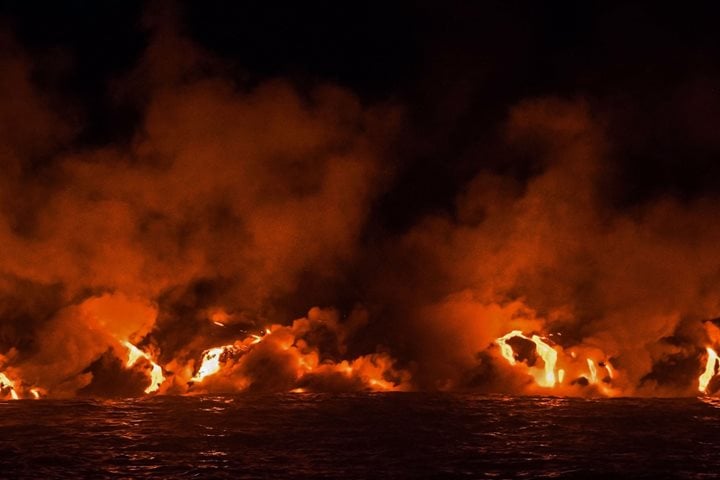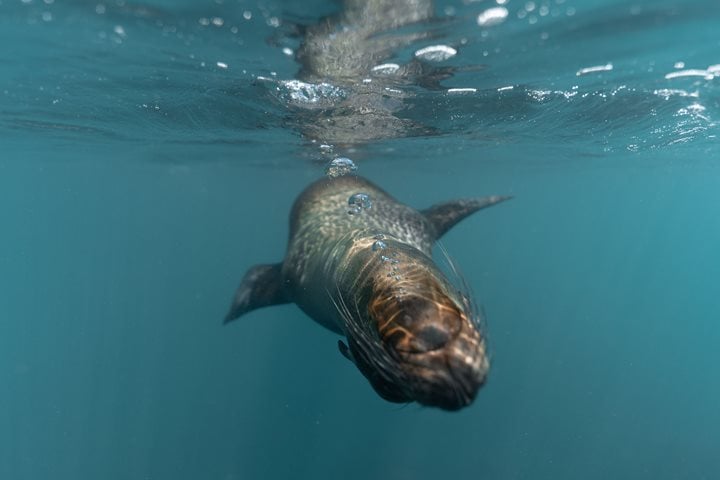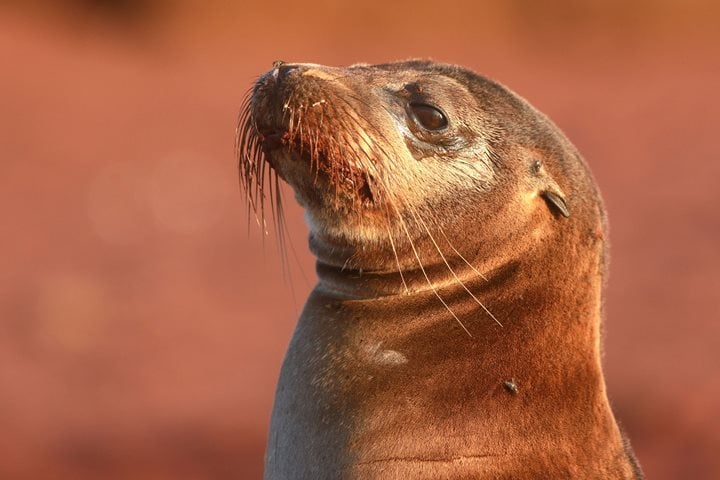It is a third day of adventure around the Galapagos Islands. Last night we celebrated Christmas on board and after a long navigation from the central islands of the Galapagos, this morning we reached the western part of this astonishing archipelago. The view this morning was spectacular! We are in search of any cetacean or birds that can be spotted from the bridge of our ship. Shield volcanos typical of oceanic islands surrounded us while early risers were up on the deck. Finally, we found a few orcas feeding on a school of fish while a few dozen frigates and noddy terns were joined the feast.
The first outing was along the northern volcano, “Ecuador”, of Isabela Island. A Zodiac ride with sightings of Galapagos penguins, brown pelicans, blue-footed boobies and many other kinds of sea birds perched on the steep cliff of Punta Vicente Roca delighted our explorers. The unique volcanic landscape and the geology of the area helped us to understand how species thrived in the past to adapt to this unique environment. Snorkeling was done afterwards and the biodiversity of the area allowed us to enjoy different kinds of fish, but the marine turtles were the highlight of the day. Here you can swim with many of these great aquatic reptiles, but also with mammals such as sea lions, and birds like cormorants and penguins. We had a great morning because we had the unique opportunity to observe orcas feeding just a few feet away from our Zodiacs, and that is a moment that happens once in a blue moon.
After been pampered by our experiences of the northern volcano of Isabela, we headed southwest to the most pristine island of Galapagos. Fernandina is considered the jewel in the crown of the islands due to the astonishing flows of lava with different kinds of textures and species distinctive from the other islands. Punta Espinoza, our landing site, welcomed us with juvenile brown pelicans and the largest species of marine iguanas. They were all over the shoreline fishing and eating, while near the mangrove trees were some crabs, rays, and juvenile hawks on the top of the branches. Lava lizards also were very active hunting flies around iguanas, and sea lions that were basking peacefully on the beach. The Darwin finches do their cleaning, their symbiotic relationship with the marine iguanas while a couple of hawks scanned the field for their early supper. After about three hours in this remarkable place we headed back to the National Geographic Islander to enjoy some drinks on the sky deck to share stories while the last beams of light were hitting the surface of the ocean. We collected memories that will stay forever in our minds.









